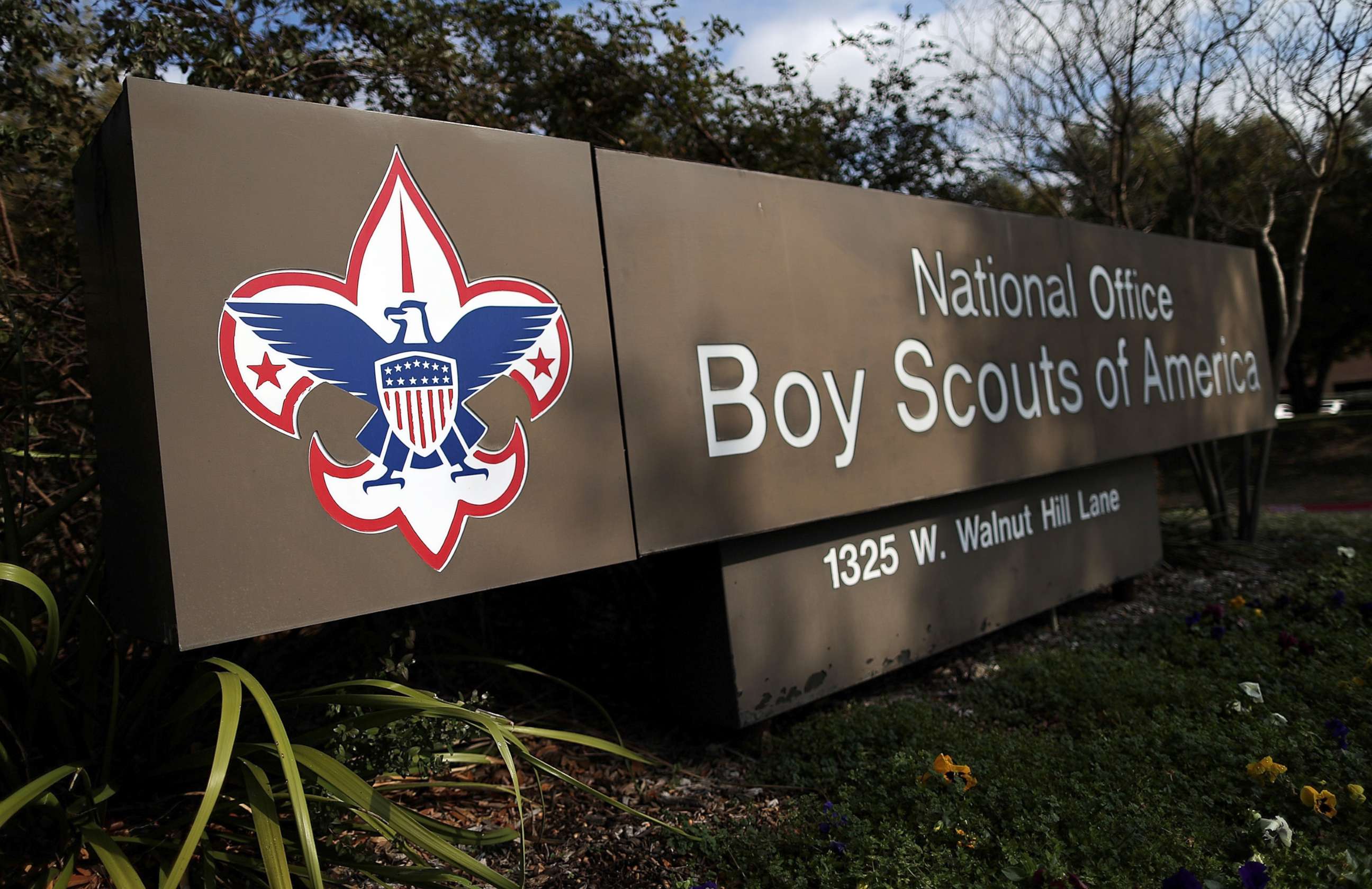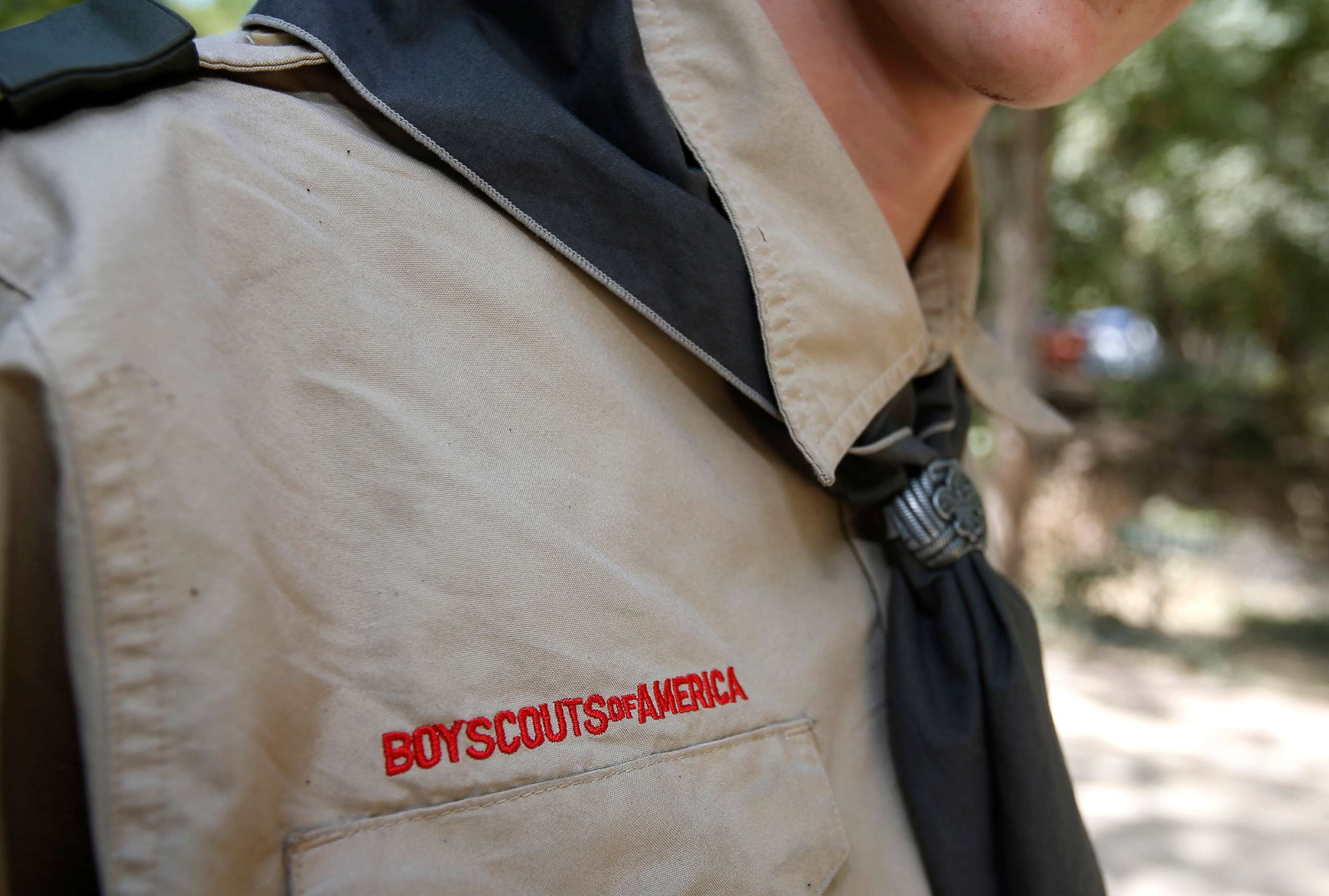Lawsuit alleges Boy Scouts had a pattern 'of concealing the harmful, illegal and immoral acts' of pedophiles
The latest suit adds to a growing number against the organization. .
The latest in a growing number of lawsuits against the Boy Scouts of America has been filed, claiming that the organization didn’t do enough to protect young boys from sexual abuse at the hands of numerous adult scout leaders.
This new lawsuit, filed Monday in Pennsylvania, focuses on the case of one unnamed male victim who was allegedly sexually assaulted by his assistant scoutmaster in the 1970s.
The lawsuit lists the Boy Scouts of America, the Penn Mountains Council of BSA, and the accused scout leader as defendants. The accuser, identified only as S.D., is listed as the plaintiff.
The Boy Scouts of America has repeatedly apologized to victims of alleged sexual abuse as lawsuits have been filed through the years, and the same is true in this latest case.
“We care deeply about all victims of abuse and sincerely apologize to anyone who was harmed during their time in Scouting. We believe victims, we support them, we pay for counseling by a provider of their choice, and we encourage them to come forward,” the Boy Scouts of America said in a statement in response to the suit.

The assistant scoutmaster allegedly "sought and gained the then minor S.D.'s trust, friendship, admiration and obedience," the lawsuit states.
The suit goes on to say that the scoutmaster "utilized physical, emotional and spiritual force and persuasion to impose his moral will upon the then minor S.D. in order to commit grievous, unspeakable acts of sexual abuse upon the person of then minor S.D. all of which acts constitute flagrant abuse of the symbolism, power and authority of his position as an Assistant Scoutmaster."
The scout leader allegedly “molested, sexually, physically, mentally, psychologically and emotionally abused the minor S.D. at various times and locations” including at a campsite and the scout leader's house, the lawsuit states.
The sexual abuse “included hundreds of incidents of fondling, hundreds of incidents of oral sexual assault and repeated attempts of anal penetration,” the suit states, noting that the abuse allegedly started when the boy was 12 or 13 years old in 1974 or 1975 and continued until about 1979 or 1980, when the boy was about 17 years old. The scoutmaster would allegedly give the boy drugs or alcohol before beginning the sexual molestations, the lawsuit states.
The lawsuit alleges that the boy went on to suffer “profound physical, emotional and psychological harm” which included “sleeplessness, nightmares, anger, depression, anxiety, loss of well-being, and/or self-destructive and abusive behavior in his adult life.”
The suit goes on to say that the Boy Scouts should have known about the abusive scout leader and failed to protect the boys from abuse.
Beyond that, however, it alleges that the organization’s actions in relation to this scoutmaster fit a pattern “of concealing the harmful, illegal and immoral acts of other pedophilic Scoutmasters and Assistant Scoutmasters. This pattern included, but was not limited to, concealing and/or destroying evidence of the misconduct of pedophilic Scoutmasters and Assistant Scoutmasters.”
The lawsuit states that the Boy Scouts did not do enough to warn the public – and the boy involved in the suit – about the “pervasiveness of sexual abuse of boys by an alarmingly large percentage of BSA’s adult scout leaders” and that led to his “profound physical injury, severe emotional distress, severe depression, anxiety, embarrassment, pain and suffering, humiliation, loss of vocation and loss of earnings, loss of faith and an inability to live a normal life.”

The suit was filed in the Philadelphia Court of Common Pleas on Aug. 5.
There are 10 counts filed as part of the suit, including fraudulent concealment, civil conspiracy, willful misconduct and wanton misconduct and reckless misconduct, intentional infliction of emotional distress, negligent infliction of emotional distress, assault and battery, negligence, a statutory violation, breach of fiduciary duty, and a charge called respondeat superior, a legal doctrine that holds an employer or principal legally responsible for an employee or agent.
The plaintiff S.D. is being represented by a group of lawyers called Abused in Scouting, which said it has compiled a list of alleged perpetrators on behalf of 547 clients who they say have told them about incidents of sexual abuse while in the Boy Scouts. The list compiled includes names of the alleged perpetrators and descriptions of the victims’ allegations, but does not include the victims’ names, according to the group.
The Boy Scouts’ statement addresses the information compiled by Abused in Scouting, saying that they “immediately investigated the limited information provided and our efforts have already resulted in approximately 120 reports to the lead law enforcement agency in each state with an accusation of abuse. We have also contacted local law enforcement for all the cases in which enough information was provided to identify the correct agency.”
“As a result of providing these notifications, some law enforcement agencies informed the BSA that they need additional information in order to investigate the claims. Because the BSA is not privy to any additional details at this time, the law enforcement agencies have called Abused in Scouting for more information. On July 11, the BSA informed AIS that a few law enforcement agencies had reported to the organization that they had been unable to contact AIS,” the Boy Scouts statement reads.
“We are continuing to manually search paper records at the local level to see if we can identify more information about the additional alleged perpetrators identified in the plaintiff’s attorneys list. As we identify sufficient information, we will immediately notify law enforcement,” the statement reads.
The organization has had a volunteer screening database in place for decades and in their statement said “[w]e believe victims and remove individuals based on only allegations of inappropriate behavior.”




